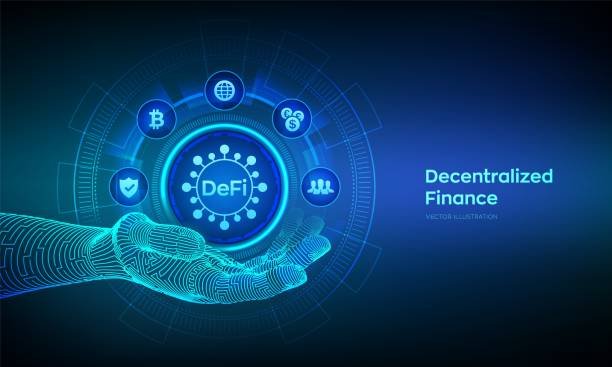Collateral liquidation assumes great importance because safeguarding the cohesiveness and security within DeFi depends on efficiency. These decentralized finance platforms harness blockchain tech to facilitate peer-to-peer (P2P) asset lending/borrowing sans middlemen. Collateral liquidation mechanisms are particularly crucial amidst market fluctuations to safeguard platform solvency while preventing instability.
Cases involving falling values and excessive depletion prompt auto liquidation of security assets. Lenders and the platform will suffer fewer losses because of this security measure. By seamlessly converting collateral into reliable asset classes, DeFi systems seek to stabilize the relationship between lenders and market instability.
Transcending the realm informed by individual dealings, the potency of collateralized liquefaction enmeshes with fabric of DeFi construction. If adequate collateral management is not employed, The system's integrity is at stake with increased likelihood of bankruptcy and failure. Collateral unwinding enforces meaningful connections between risks taken on loans and borrowers invested in repayment success. Also, it facilitates a stronger bond amongst peers, thereby promoting a safer atmosphere for lending through DeFi platforms.
Given the growth of DeFi, maintaining robust collateral management practices assumes greater significance. Adopting flexible tactics amid varying economic conditions, parties involved stay ahead of the game. Central to crafting successful collateral liquidation strategies are tactics like maintaining decentralized systems, securing users assets, and adapting to fluctuations in market conditions.
To summarize, the complex landscape of DeFi collateralization provides crucial support within the realm of decentralized finance. After gaining insight into its mechanics, threats countered, and function within this larger context, we may properly assess its value on the financial landscape. Bolstered by creativity, teamwork, and ongoing enhancement, the DeFi collective strives to strengthen collateralization protocols and foster a robust and successful economic environment accessible to all interests involved.
Crucial for maintaining balance and endurance, DeFi's collateral Liquidation mechanisms undergirds trustworthy financial dealings. Utilizing smart contracts and intricate coding, DeFi collateralization seeks to champion lender protection alongside firmly established systems.
Fundamental to this procedure is the notion of overs collateralization. Lenders need sufficient value present above the sum borrowed before proceeding with investments via DeFi networks. Excess collateral protects against market risks by providing a safety net. If the worth of secured assets drops beneath a specific threshold, triggering entry into liquidation procedures predefined via determination of a previously set collateralization ratio.
Upon detecting collateral loss's decline in value, the smart contract flags the borrower via automatic notifications for possible liquidation procedures initiation, this move protects Decentralized Applications (DApps) users against any rising losses likely leading to severe consequences if not addressed adequately soon enough. Once this particular schedule has elapsed, there is an opportunity during which borrowers might choose to either rectify their collateral coverage by means of timely payment or equivalent augmentation through provision of supplementary assets.
Actions not taken by the borrower while under liquidation's timer prompt the keen algorithmic lawsuit to instigate the collateral liberation measure verbatim. Replacing seized collateral is accomplished through a transaction between the lending app and the highest offering party involving sale and transfer of ownership. By paying back the initial lenders with them, these stablecoins find practical application.
A crucial component of collateral asset sales, the auction mechanism fosters market efficiency. Lenders save time by immediately turning illiquid assets like real estate into reliable measures with the assurance provided, crowdfunding comes extraordinarily handy here. Market demand, the collateral's quantity, and unique auction settings impact the sale effectiveness.
Unbiased bidding processes safeguarded by blockchain technology can be found in certain DeFi environments. Blockchain integration enables these systems to securely oversee auctions with minimal susceptibility to tampering or deceit.
These novel variations on stablecoin creation, pioneered by DeFi, pose intriguing challenges regarding collateral redress deployment ways. Although these possessions lack direct fiduciary equivalence, they continue to complicate liquidation protocols. These changes prompt the creation of novel strategies and protocols explicitly designed to bolster collateral liquidation's success across diverse environments.
Simply put, the intricacies of DeFi collide with smart contracts, carefully calibrated shares, instant updates, and competitive tussles. Intricately arranged, these processes harmonize loan and deposit operations while preserving DeFi's commitment to mutual confidence and dependable assets for all those involved.
Collateral liquidation's vital function within DeFi shouldn't go unmentioned. it bolsters the security, veracity, and lasting feasibility of cutting-edge monetary arrangements by defraying dangers amid bust spikes or quick market corrections.
Risk Mitigation: Proactively mitigating credit risk, collateral liquidation secures financial losses.
Trust And Transparency: Smart contracts autonomously facilitate transparency, security, and unwavering operations through collateral liquidations.
Lender Confidence: increased participation by lenders hinges on their trust in the platform's deft handling of risks via DeFi lending Collateral liquidation stabilized investment portfolio rapidly deploying valuables like artwork or real estate. Greater self assurance among financial institutions corresponds to augmented lending activity thus, facilitating monetary growth across multiple segments. etc.
In conclusion, collateral liquidation functions as the critical factor upholding DeFi's dynamic framework. Leveraging this tool as a comprehensive risk mitigator enables us to safeguard loaned capital through robust securities, instilling confidence, accountability, and transparent dealings among various stakeholders.

The rewards earned on this comment will go directly to the people ( wealthwess ) sharing the post on LeoThreads,LikeTu,dBuzz.https://leofinance.io/threads/wealthwess/re-leothreads-2lw7aw7hk
Your explanation of the mechanics, benefits, and challenges of collateral liquidation mechanisms in the context of decentralized finance is well-structured and informative.
It's clear that the intricate interplay of factors like overs collateralization, smart contracts, auction mechanisms, and blockchain technology contributes to the security, trust, and overall stability of DeFi platforms.
Thanks for the great write-up.
I’m glad my piece caught your attention, and thank you for the kind words. It’s really great to have you stopped by.
Congratulations @wealthwess! You have completed the following achievement on the Hive blockchain And have been rewarded with New badge(s)
Your next target is to reach 11000 upvotes.
You can view your badges on your board and compare yourself to others in the Ranking
If you no longer want to receive notifications, reply to this comment with the word
STOPTo support your work, I also upvoted your post!
Check out our last posts: